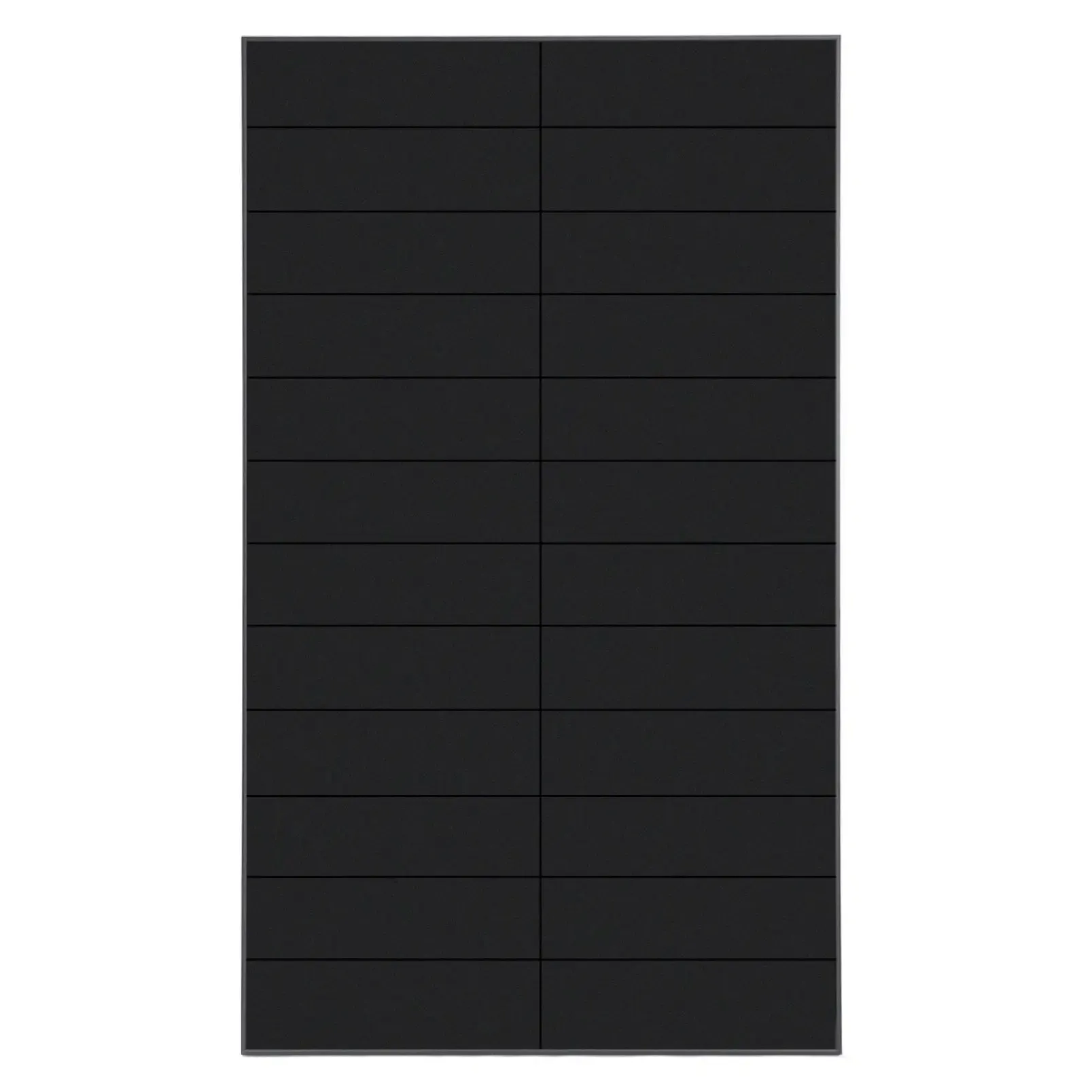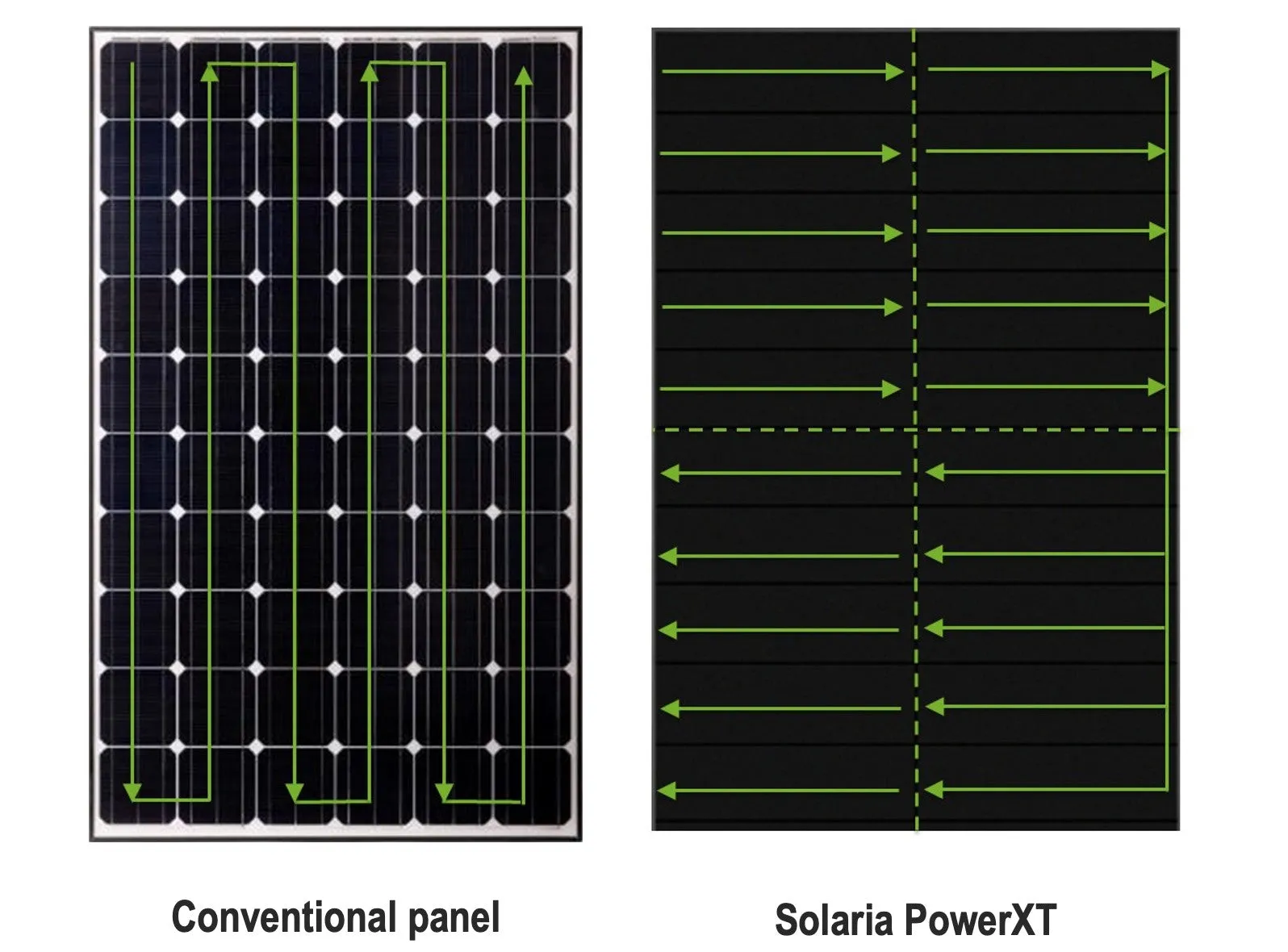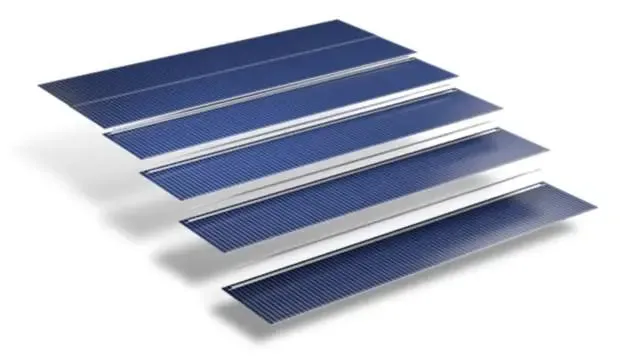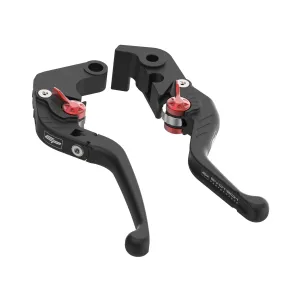The parameters are the value under the standard test conditions (STC) AM=1.5; 1000W/㎡; 25ºC
- Rated Voltage23.65V
- Open circuit voltage 27.95V
- Rated Current 7.19A
- Short circuit current 7.7A
- Outline Dimension 1270*660*30mm
- Weight: 10.3kgs
- Cell Type Mono
- Cell Efficiency ≥21.8%
- Total Efficiency of the Cells Used 177W
- Module Lamination Efficiency 97%
- Maximum System Voltage 500V
- Output Tolerance 0~ 3%
- Connector Type MC4
- Module Structure Black aluminum frame/Glass/EVA/Back sheet
- Junction box rating ≥IP67
- Number of Diodes 1
- Working Temperature -40°C~ 80°C
This allows the cells to be connected differently to conventional solar panels, in that,
there are no busbars (ribbons) required and the solar cells can be joined together
resulting in no gaps between the solar cells.
Shingled solar modules can also be wired differently to conventional solar panels. Typically, solar cells in conventional solar panels are wired in a series of strings whereas the solar cells in shingled panels can be wired in parallel configuration.
What are the advantages of shingled solar panels?
Essentially the three key advantages of the shingled solar panel design are they
produce more power, improve reliability and are aesthetically pleasing.
1. Increased energy harvest Higher power per square metre
The shingled solar cells do not require busbars across the top of the cells so more of
the solar cells are exposed to sunlight. The cells do not need to be spaced apart like
in conventional solar panels so the solar panel area can produce more energy
Outdoor shade testing over a 70-day period has shown that the Solaria Power XT
shingle solar panel performs between 37 to 45% better than conventional solar panel
designs.
2. Better reliability Low busbar failures
Shingle solar panels do away with approximately 30 metres of busbar and soldered
joints that is required on conventional solar panels, so busbar failures are reduced.
Better mechanical performance
Static and dynamic load tests show that the shingle approach is more resistant to
failure due to external forces being applied to the solar panel compared to
conventional solar panels.
3. More attractive Shingled solar panels have no visible circuitry which give them clean simple look providing superior street appeal.
As solar panel technology continues to mature, shingled modules represent the
current state-of-the-art in terms performance, reliability and aesthetics.














